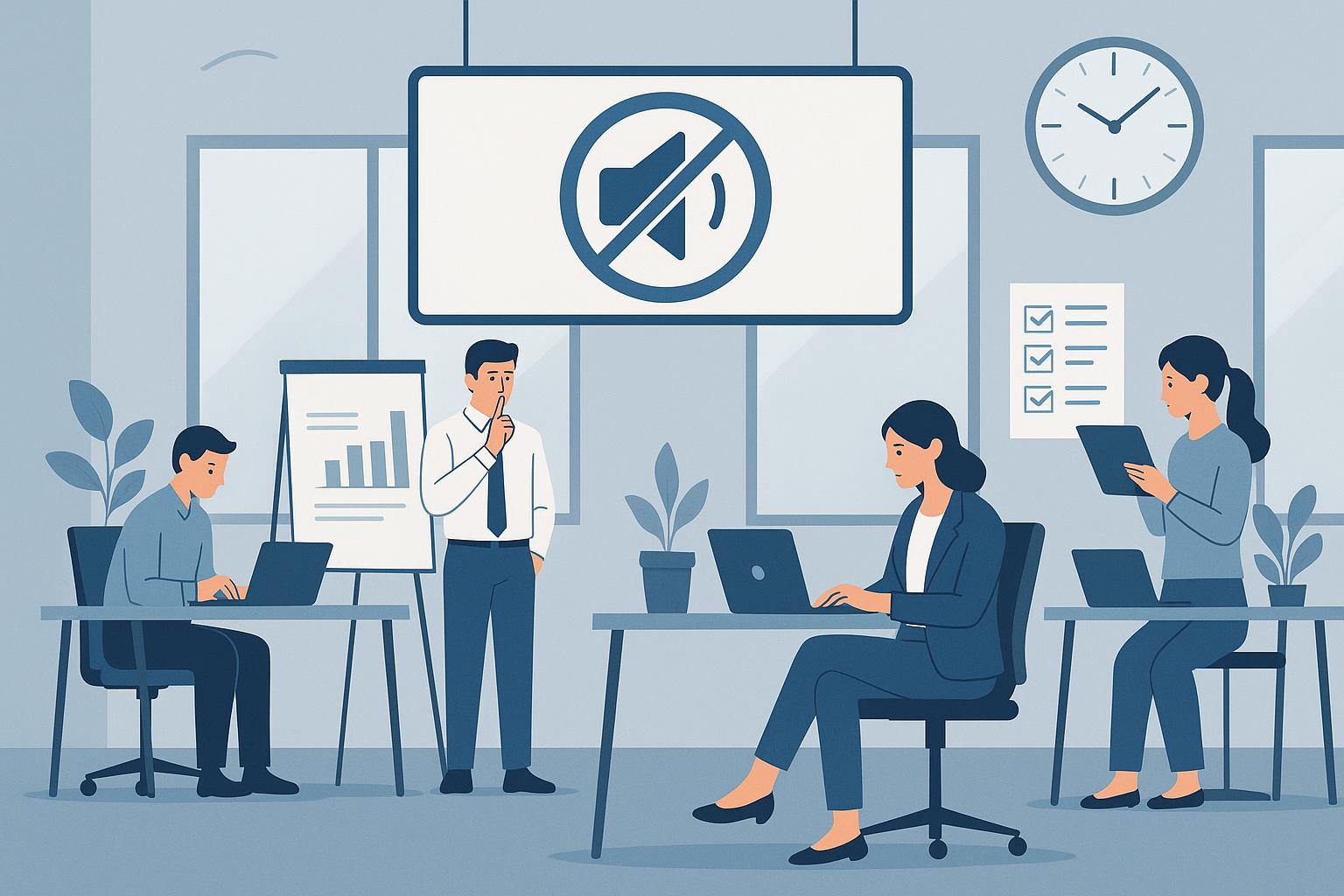How to Implement Quiet Hours at Work: A Practical Guide to Boost Focus and Well-Being
Practical guide to implementing quiet hours at work in 2025. Steps for planning, communicating, tools, metrics, and FAQs to boost focus and well-being.

How to Implement Quiet Hours at Work: A Practical Guide to Boost Focus and Well-Being
Quiet hours improve focus, reduce interruptions, and support employee well-being. This guide explains practical steps for implementing quiet hours at work in 2025, drawing on recent workplace trends in hybrid work and mental health support from 2024 and 2025.
Use this plan to design a policy that fits your team size and culture. The guidance covers planning, communication, tools, etiquette, measurement, and common questions so you can start or refine quiet hours with clarity and fairness.
Why quiet hours matter
Quiet hours increase productivity and protect cognitive energy. Studies from 2024 and 2025 emphasize uninterrupted time as a top factor for deep work and reduced burnout in hybrid and office settings.
Benefits for employees and teams
Quiet hours let employees complete focused tasks with fewer context switches. Less task switching improves accuracy and shortens task completion times.
Teams report higher job satisfaction when they can plan around regular periods of no non-urgent interruptions. That supports retention and helps managers meet goals more predictably.
When quiet hours work best
Quiet hours are most effective when matched to work patterns and time zones. Use staff surveys and calendar analytics from 2024 or 2025 tools to find optimal times.
For hybrid teams, pair quiet hours with asynchronous communication expectations. This supports collaboration without forcing everyone online at the same time.
Planning a quiet hours policy
Start simple and clear. A written policy reduces ambiguity and ensures consistent application.
Define scope and schedule
Decide whether quiet hours apply company-wide, team-wide, or individually. Common models include daily two-hour blocks or a weekly half-day.
Account for customer-facing roles. Allow exceptions and create coverage plans for critical functions. Communicate these exceptions in advance.
Set expectations and etiquette
List allowed and restricted activities. Allowed items might include focused work, scheduled meetings, and emergency communications.
Restricted items can include ad-hoc meetings, non-urgent calls, and internal broadcast messages. Provide templates for asynchronous updates so work can continue without live interruptions.
Implementing quiet hours at work: step-by-step
Use a phased rollout to build adoption and reduce friction. Training and tools increase success.
Step 1: Pilot and collect feedback
Run a 4-week pilot with a volunteer team. Track metrics such as task completion time, meeting counts, and subjective focus ratings.
Collect qualitative feedback via short surveys and focus groups. Adjust hours and rules based on results before scaling up.
Step 2: Use tools and signals
Use calendar blocks labeled "Quiet Hours" and status messages in chat apps to signal availability. Automate status changes with calendar integrations available in 2024-2025 platforms.
Adopt shared guidelines for email subject tags and message priority so teammates can triage without interrupting quiet time.
Step 3: Train managers and employees
Offer brief training and sample scripts for managers to discuss the policy with direct reports. Equip managers to handle exceptions and model the behavior.
Include tips for personal time management, like batching meetings and using focus techniques proven effective in recent workplace studies.
Measure success and refine
Track adoption and outcomes to ensure quiet hours deliver the intended benefits. Use both quantitative and qualitative measures.
Key metrics
- Task completion time and error rates
- Number and length of ad-hoc interruptions
- Employee engagement and self-reported focus
Reassess quarterly. Use pulse surveys for quick adjustments and deeper surveys annually to decide on permanent changes.
Continuous improvement
Use feedback loops to refine schedule, coverage, and tools. Small adjustments often yield large benefits in adoption and morale.
Document lessons learned and create case notes for future teams implementing quiet hours at work.
Frequently Asked Questions
How do I handle urgent issues during quiet hours?
Designate a clear escalation path and an on-call rotation for urgent issues. Train staff to assess urgency and use an agreed channel for emergencies.
Document criteria for what counts as urgent so employees do not overuse the exception. Review actual escalations monthly to ensure the policy works.
Will quiet hours reduce collaboration?
Quiet hours reduce unnecessary interruptions but do not block planned collaboration. Schedule core collaboration windows outside quiet hours and use asynchronous updates during quiet time.
Teams often report better-quality collaboration when meetings are focused and fewer meetings are scheduled by default.
How long should quiet hours be for hybrid teams?
Start with two daily hours or one half-day weekly and adjust based on feedback. Consider time zones and create overlapping quiet windows for core collaboration when needed.
Flexibility is key. Allow teams to choose windows that match their workflows while keeping company-wide principles consistent.
Conclusion
Quiet hours are a practical way to boost focus, reduce burnout, and improve work quality. The best programs are simple, equitable, and supported by clear signals and tools.
Begin with a pilot, measure results, and refine based on employee feedback. With careful planning and consistent leadership, implementing quiet hours at work can become a sustainable practice that benefits both people and performance.
You Deserve an Executive Assistant


